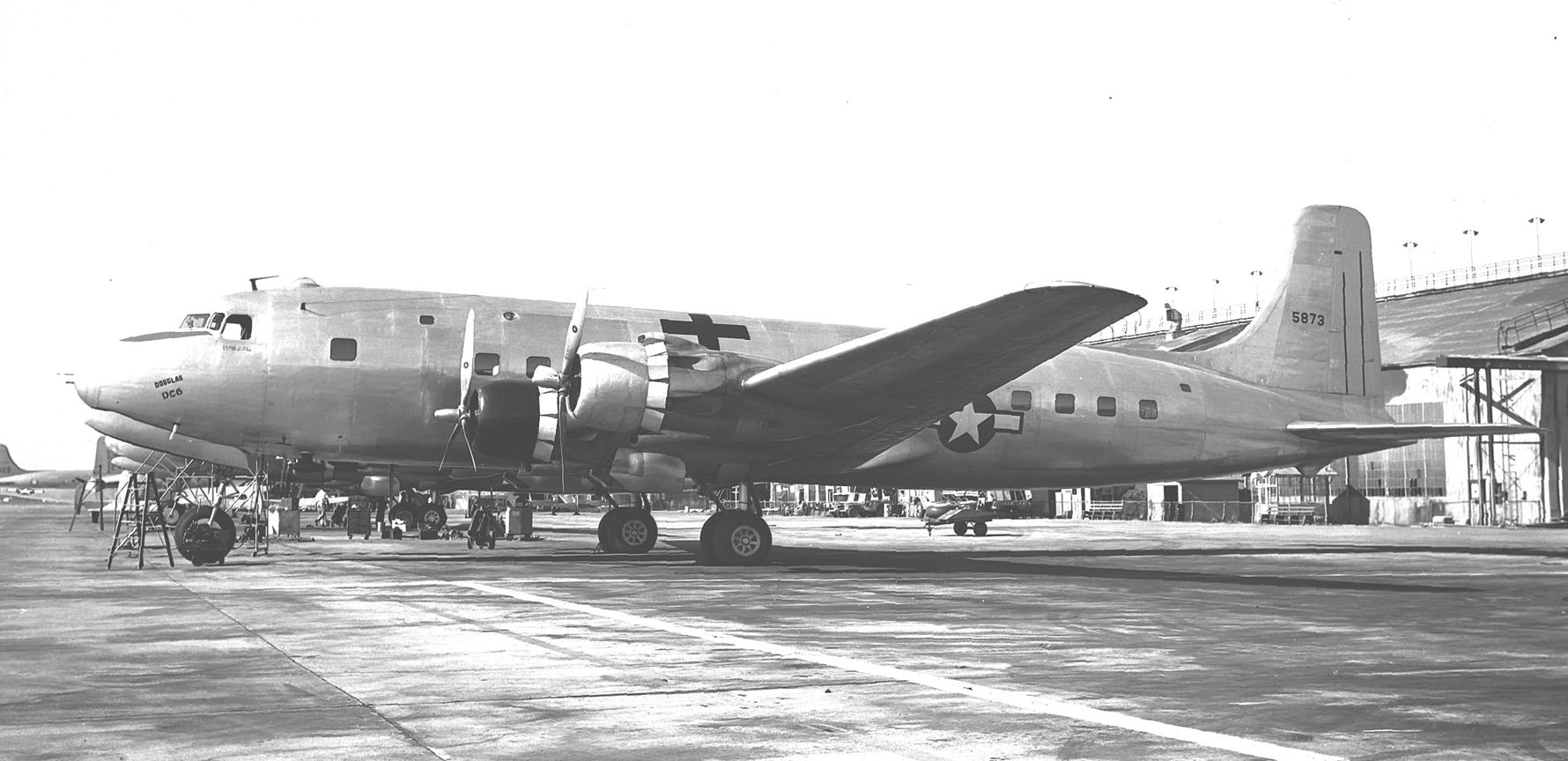
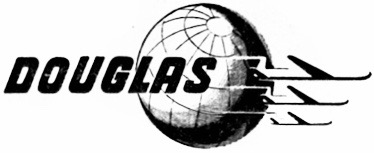
In 1944, the U.S. Army Air Corps had requested a faster, higher-flying variant of the Douglas C-54E Skymaster, with a pressurized cabin. Douglas Aircraft Company developed the XC-112A in response. It was completed 11 February 1946 and made its first flight 4 days later. With the end of World War II, military requirements were scaled back and no orders for the type were placed.
Douglas saw a need for a new post-war civil airliner to compete with the Lockheed L-049 Constellation. Based on the XC-112A, the prototype Douglas DC-6 was built and made its first flight four months later, 29 June 1946.
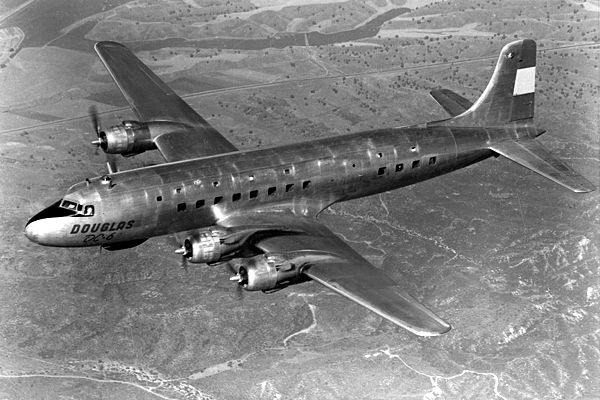
The Air Force ordered the twenty-sixth production Douglas DC-6 as a presidential transport, designated VC-118, The Independence. Beginning in 1951, the Air Force ordered a variant of the DC-6A as a the C-118A Liftmaster military transport and MC-118A medical transport. The U.S. Navy ordered it as the R6D-1.
The Douglas DC-6 was flown by a pilot, co-pilot, flight engineer and a navigator on longer flights. It was designed to carry between 48 and 68 passengers, depending on variant.
The DC-6 was 100 feet, 7 inches (30.658 meters) long with a wingspan of 117 feet, 6 inches (35.814 meters) and overall height of 28 feet, 5 inches (8.612 meters). The aircraft had an empty weight of 55,567 pounds (25,205 kilograms) and maximum takeoff weight of 97,200 pounds (44,090 kilograms).

The Douglas DC-6 had a cruise speed of 311 miles per hour (501 kilometers per hour) and range of 4,584 miles (7,377 kilometers).
XC-112A 45-873 was redesignated YC-112A and was retained by the Air Force before being transferred to the Civil Aeronautics Administration at Oklahoma City, where it was used as a ground trainer. 36326 was sold at auction as surplus equipment, and was purchased by Conner Airlines, Inc. Miami, Florida and received its first civil registration, N6166G, 1 August 1956. The YC-112A was certified in the transport category, 20 August 1956.
Conner Airlines sold 36326 to Compañia Ecuatoriana de Aviación (CEA), an Ecuadorian airline. Registered HC-ADJ, Ecuatoriana operated 36326 for several years.
It was next re-registered N6166G, 1 August 1962, owned by ASA International. A few months later, 1 May 1963, 36326 was registered to Trabajeros Aereos del Sahara SA (TASSA) a Spanish charter company specializing in the support of oil drilling operations in the Sahara, registered EC-AUC.
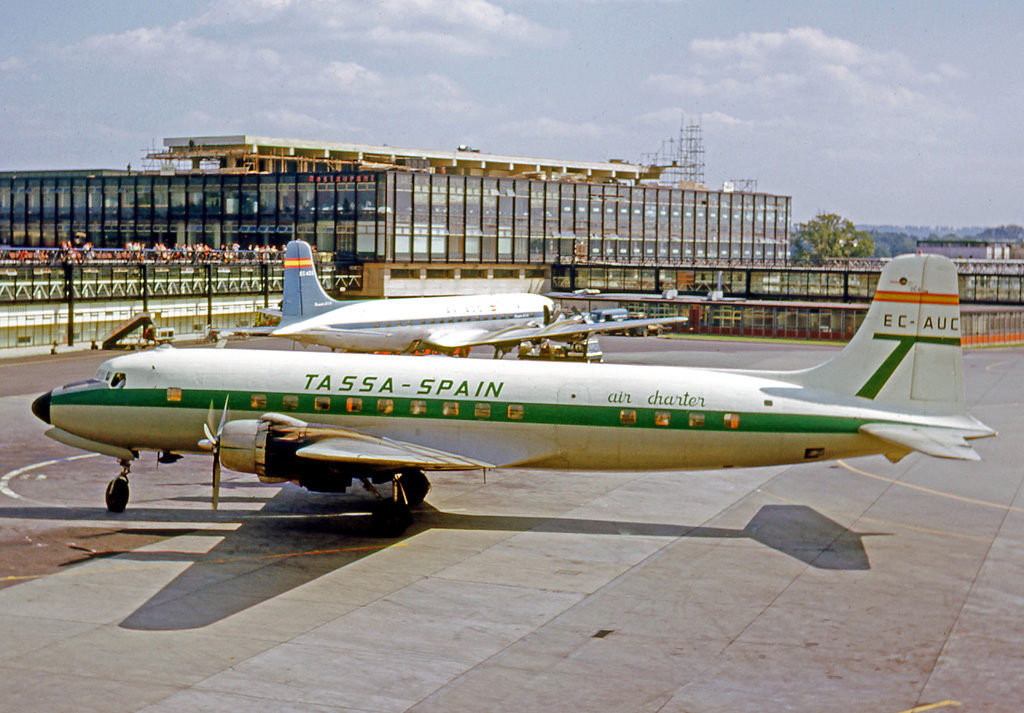
In 1965, with a private owner, 36326 was once again re-registered N6166G. Just two weeks after that, 1 June 1965, 36326 was registered to TransAir Canada as CF-TAX.
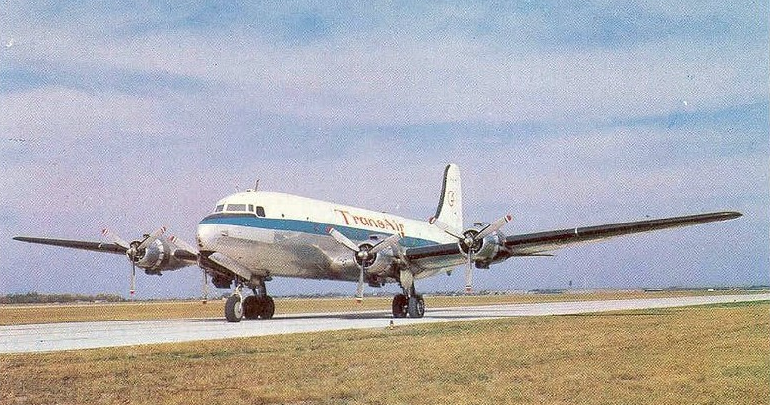
Two years later, 13 June 1967, Mercer Airlines bought 36326. This time the airplane was registered N901MA. Mercer was a charter company which also operated a Douglas C-47 and Douglas DC-4.
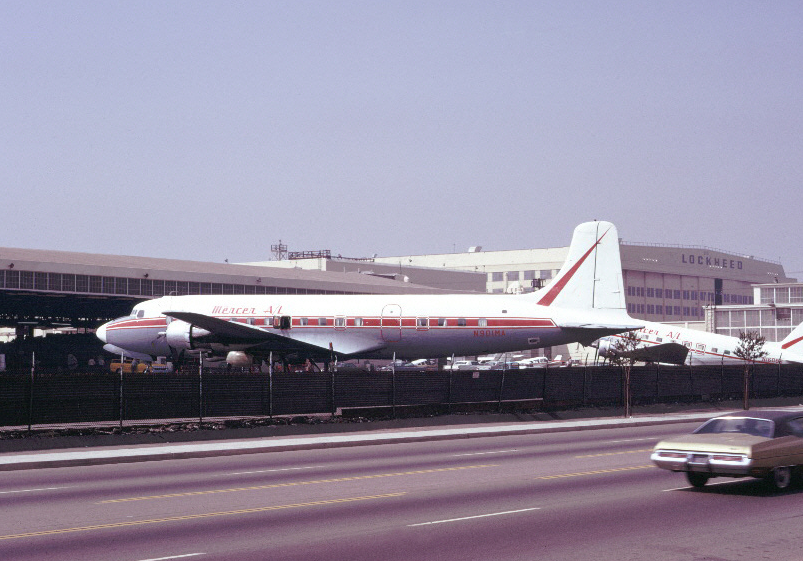
A Las Vegas, Nevada, hotel chartered Mercer Airlines to fly a group of passengers from Ontario International Airport (ONT), Ontario, California, to McCarran International Airport (LAS). On 8 February 1976, 36326, operating as Mercer Flight 901, was preparing to fly from Hollywood-Burbank Airport (BUR) where it was based, to ONT. The airliner had a flight crew of three: Captain James R. Seccombe, First Officer Jack R. Finger, Flight Engineer Arthur M. Bankers. There were two flight attendants in the passenger cabin, along with another Mercer employee.
Weather at BUR was reported as 1,000 feet (305 meters) scattered, 7,000 feet (2,134 meters) overcast, with visibility 4 miles (6.4 kilometers) in light rain and fog. The air temperature was 56 °F. (13.3 °C.), the wind was 180° at 4 knots (2 meters per second).
At 10:35 a.m. PST (18:35 UTC), Flight 901 was cleared for a rolling takeoff on Burbank’s Runway 15. While on takeoff roll, Flight Engineer Bankers observed a warning light for engine #3 (inboard, starboard wing). He called out a warning to the Captain, however, the takeoff continued.
Immediately after takeoff, a propeller blade on #3 failed. The intense vibration from the unbalanced propeller tore the #3 engine off of the airplane’s wing, and it fell on to the runway below.
The thrown blade passed through the lower fuselage, cut through hydraulic and pneumatic lines and electrical cables and then struck the #2 engine (inboard, port wing), further damaging the airplane’s electrical components and putting a large hole in that engine’s forward accessory drive case. The engine rapidly lost lubricating oil.
Flight 901 declared an emergency and requested to land on Runway 07, which was approved by the Burbank control tower, though they were informed that debris from the engine was on the runway at the intersection of 15/33 and 07/25. The airplane circled to the right to line up for Runway 07.
Just prior to touchdown, warning lights indicated that the propeller on the #2 engine had reversed. (In fact, it had not.) Captain Seccombe announced that they would only reverse #1 and #4 (the outboard engines, port and starboard wings) to slow 36326 after landing, and the airplane touched down very close to the approach end of the runway.
Because of the damage to the airplane’s systems, the outboard propellers would not reverse to slow the airplane and the service and emergency brakes also had failed. N901MA was in danger of running off the east end of the 6,055 foot (1,846 meters) runway, across the busy Hollywood Way and on into the city beyond.
The flight crew applied full power on the remaining three engines and again took off. The landing gear would not retract. The electrical systems failed. The #2 engine lost oil pressure and began to slow.
The DC-6 circled to the right again and headed toward Van Nuys Airport (VNY), 6.9 miles (11.1 kilometers) west of Hollywood-Burbank Airport. They informed Burbank tower that they would be landing on Van Nuys Runway 34L which was 8,000 feet (2,438 meters) long. Because of the emergency, the crew remained on Burbank’s radio frequency. The #2 engine then stopped but the propeller could not be feathered.
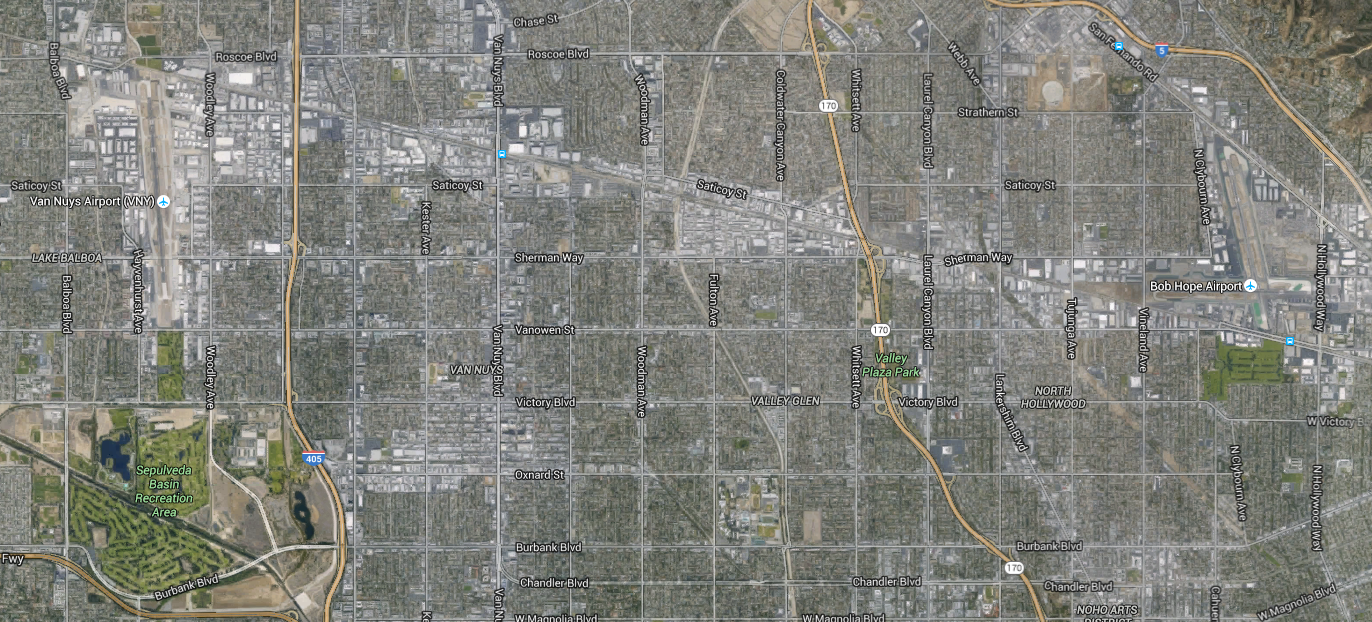
Van Nuys weather was reported as 600 feet (183 meters) scattered, 10,000 feet (3,048 meters) overcast, with visibility 10 miles (16.1 kilometers) in light rain, temperature 55 °F. (12.8 °C.). The airliner was flying in and out of the clouds and the crew was on instruments. [1045: “Special, 1,200 scattered, 10,000 feet overcast, visibility—10 miles, rainshowers, wind—130° at 4 kn, altimeter setting—29.93 in.”]
Because of the drag of the unfeathered engine #2 propeller and the extended landing gear, the Flight 901 was unable to maintain altitude with the two remaining engines. The airplane was not able to reach the runway at VNY.
A forced landing was made on a golf course just south of the airport. The airplane touched down about 1 mile south of the threshold of Runway 34L on the main landing gear and bounced three times. At 10:44:55, the nose then struck the foundation of a partially constructed building, crushing the cockpit. All three flight crew members were killed by the impact.
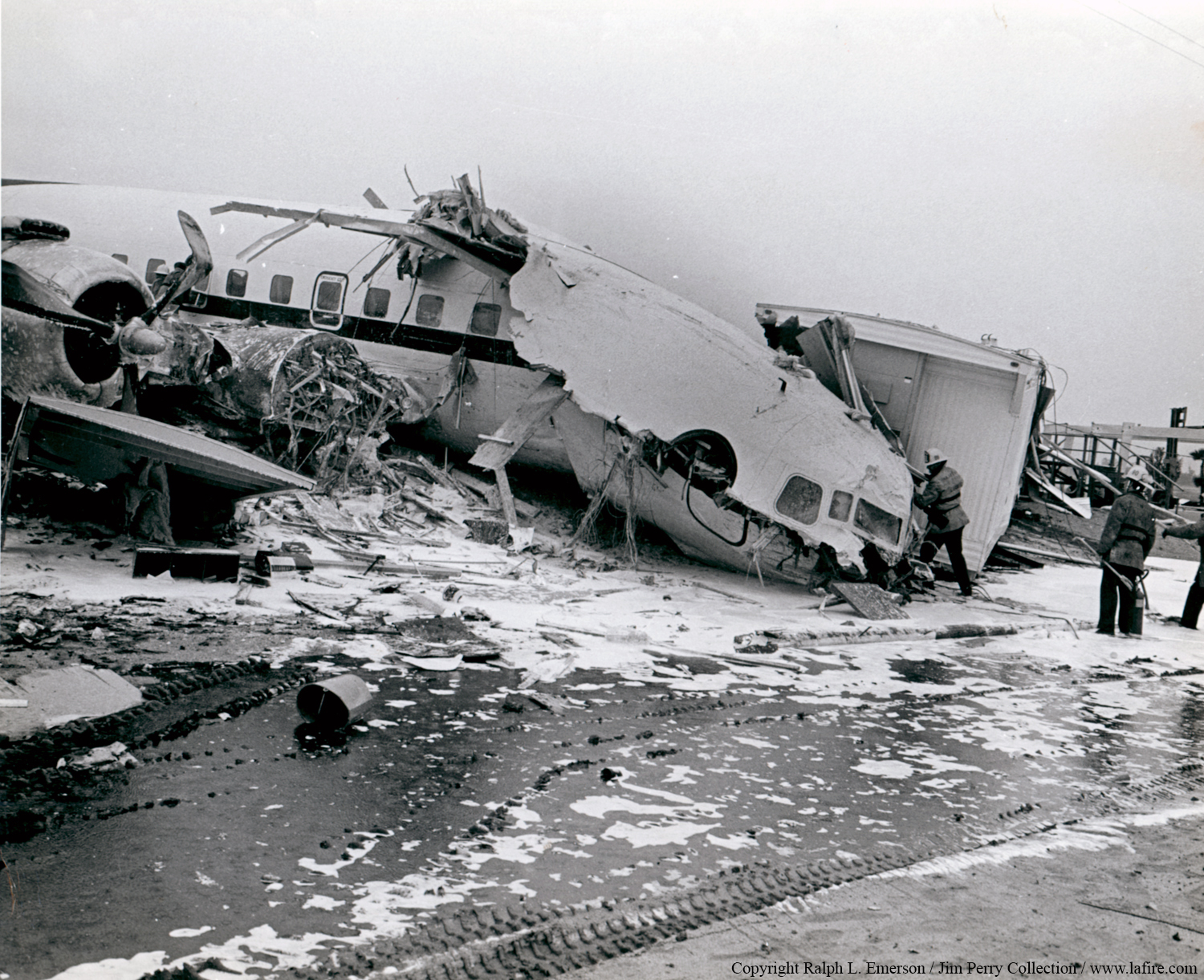
Both flight attendants were trapped under their damaged seats but were able to free themselves. They and the passenger were able to escape from the wreck with minor injuries.
Los Angeles City Fire Department firefighters attempted to rescue the crew by cutting into the fuselage. Even though the area around the airplane had been covered with fire-retardant foam, at about 20 minutes after the crash, sparks from the power saw ignited gasoline fumes. Fire erupted around the airplane. Ten firefighters were burned, three severely. N901MA was destroyed.
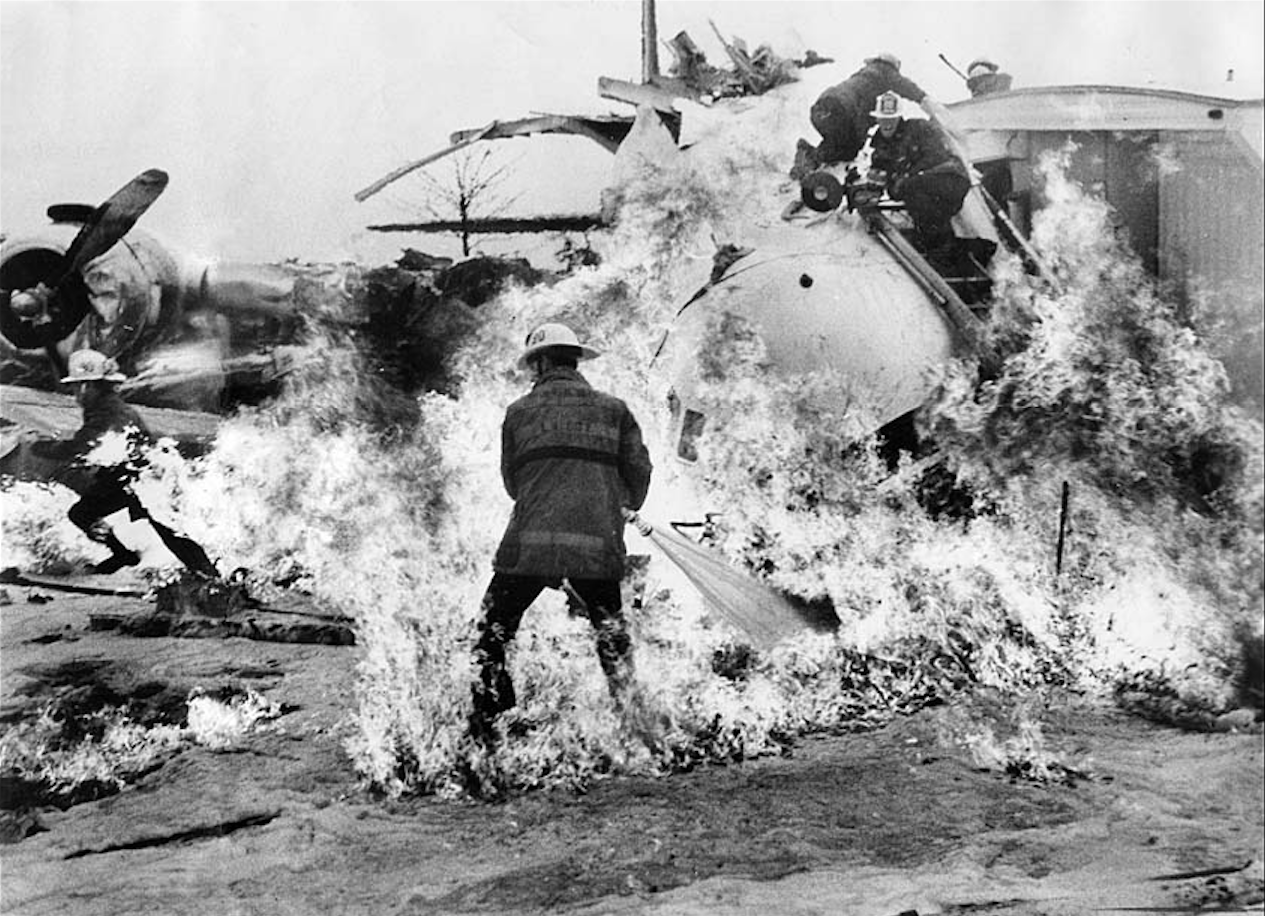
At the time of the accident, YC-112A 36326 was just three days short of the 30th anniversary of its completion at Douglas. It had flown a total of 10,280.4 hours. It was powered by three Pratt & Whitney R-2800-83 AMS, and one R-2800-CA18 Double Wasp engines. All four engines drove three-bladed Curtiss-Wright Type C632-S constant-speed propellers. The failed propeller had been overhauled then installed on N901MA 85 hours prior to the 8 February flight.
The National Transportation Safety Board investigated the accident. It was found that a fatigue fracture in the leading edge of the propeller blade had caused the failure. Though the propeller had recently been overhauled, it was discovered that the most recent procedures had not been followed. This required that the rubber deicing boots be stripped so that a magnetic inspection could be made of the blade’s entire surface. Because this had not been done, the crack in the hollow steel blade was not found.
© 2019, Bryan R. Swopes